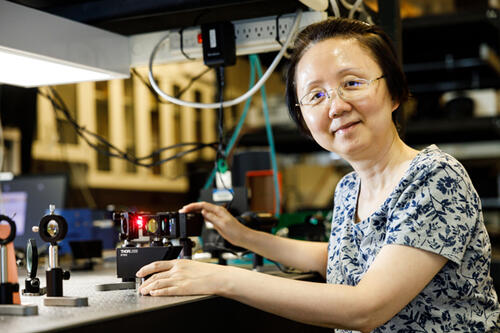
This article is excerpted from an article which originally appeared in Yale Engineering magazine.
When the laser was invented, the fundamental science behind it astounded the physics community. On the other hand, many in the field wondered what it could be used for. Even one of its inventors called it “a solution in search of a problem.” Today, of course, the list of laser applications is a long one and continues to grow. Lasers are now used for everything from manufacturing to surgery to home electronics. Indeed, lasers are such a ubiquitous part of our daily lives that some might suspect that there’s not much more to discover about these intense beams of light.
Not Hui Cao, who continues to invent new types of lasers, and find new ways to put them to use. Conversely, sometimes her lab explores practical applications, which then leads to new insights about the fundamental physics of lasers. She has pioneered the use of random lasers in biomedical imaging. She has figured out how to stabilize chaotic lasers by using chaotic cavities, that is, “fighting fire with fire.” Her work has earned her a place in Photonics Spectra’s “History of the Laser,” as well as numerous awards and honors. This year, she was elected to both the American Academy of Arts & Sciences and the National Academy of Sciences.
Cao is convinced that lasers have a lot more secrets to reveal. One of her ongoing research projects is finding a way to use the coherent control of lasers to be able to penetrate deeper into biological tissue for noninvasive imaging. But tissue changes very quickly, so “the burning question,” she said, is finding a way to adapt the laser to quickly find the way into the tissue.
“This is a really exciting period for lasers, for optics, and also more generally, for applied physics,” she said. “We are going back and forth between physics and engineering, and I really enjoy that. I think there’s a lot of things we can do.”